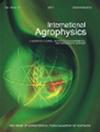矿物和有机添加物对土壤微生物组成的影响
IF 1.7
4区 农林科学
Q2 AGRONOMY
引用次数: 9
摘要
本研究的目的是评估不同矿物-有机混合物对土壤微生物组成和化学性质变化的影响。盆栽试验设计包括6个处理:不施肥的土壤-C,施用矿物NPK肥料的土壤-MF,施用NPK+3或6%褐煤和3%沸石-蛭石复合物(MF+CW3%,MF+CW6%)的土壤,施用NPK+3或6%leonardite和3%沸石/蛭石复合物的土壤(MF+CL3%,MF+CL6%)。试验植物为春油菜和春小麦。微生物数量最高:油菜-在MF+CW3%和MF+CW6%处理的土壤中,小麦-在MF+CL3%和MF+CL6%处理的土壤。春油菜和春小麦的分析微生物数量增幅最大,分别为:细菌190%(MF+CW3%)和1198%(MF+CL3%),霉菌221%(MF+CW3%)和1601%(MF+CL3%),固氮菌248%(MF+CW6%)和251%(MF+CL3%),放线菌116%(MF+SW3%),251%(MF+CL3)。施用的矿物-有机混合物对土壤生物活性的有益影响与这些材料对土壤化学性质(如pH或电导率)的影响密切相关,计算的相关系数证实了这一点。本文章由计算机程序翻译,如有差异,请以英文原文为准。
Effect of mineral and organic additions on soil microbial composition
. The aim of the study was to evaluate the effect of different mineral-organic mixtures on changes in soil microbial composition and chemical properties. The design of the pot exper iment included 6 treatments: soil without fertilization – C, soil fertilized with mineral NPK fertilizers – MF, soil with NPK + 3 or 6% lignite and 3% zeolite-vermiculite composite (MF+CW3%, MF+CW6%), soil with NPK + 3 or 6% leonardite and 3% zeolite-vermiculite composite (MF+CL3%, MF+CL6%). The test plants were spring oilseed rape and spring wheat. The highest number of microorganisms was observed: for oilseed rape – in the soil of the MF+CW3% and MF+CW6% treatments, and for wheat – in the soil of the MF+CL3% and MF+CL6% treatments. The maximum percentage increase in the number of analysed micro organisms, for spring rape and spring wheat, respectively, was: bacteria 190% (MF+CW3%) and 1198% (MF+CL3%), mould fungi 221% (MF+CW3%) and 1601% (MF+CL3%), Azotobacter spp. 248% (MF+CW6%) and 251% (MF+CL3%), actinomycet es 116% (MF+CW3%) and 251% (MF+CL3%). The beneficial effect of the applied mineral-organic mixtures on soil biological activity is closely related to the effect of these materials on soil chemical properties, such as pH or electrical conductivity, which was confirmed by the calculated correlation coefficients.
求助全文
通过发布文献求助,成功后即可免费获取论文全文。
去求助
来源期刊

International Agrophysics
农林科学-农艺学
CiteScore
3.60
自引率
9.10%
发文量
27
审稿时长
3 months
期刊介绍:
The journal is focused on the soil-plant-atmosphere system. The journal publishes original research and review papers on any subject regarding soil, plant and atmosphere and the interface in between. Manuscripts on postharvest processing and quality of crops are also welcomed.
Particularly the journal is focused on the following areas:
implications of agricultural land use, soil management and climate change on production of biomass and renewable energy, soil structure, cycling of carbon, water, heat and nutrients, biota, greenhouse gases and environment,
soil-plant-atmosphere continuum and ways of its regulation to increase efficiency of water, energy and chemicals in agriculture,
postharvest management and processing of agricultural and horticultural products in relation to food quality and safety,
mathematical modeling of physical processes affecting environment quality, plant production and postharvest processing,
advances in sensors and communication devices to measure and collect information about physical conditions in agricultural and natural environments.
Papers accepted in the International Agrophysics should reveal substantial novelty and include thoughtful physical, biological and chemical interpretation and accurate description of the methods used.
All manuscripts are initially checked on topic suitability and linguistic quality.
 求助内容:
求助内容: 应助结果提醒方式:
应助结果提醒方式:


